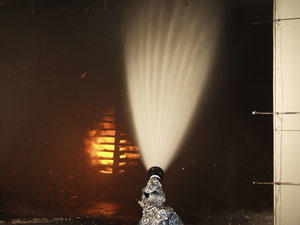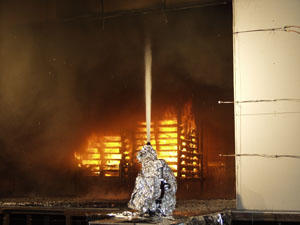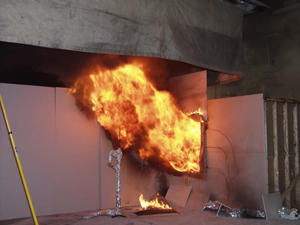Fire Fighting Tactics
Hose Streams
|


Preliminary experiments examining the impact of different hose streams on a pallet fire. |
Little, if any, fire suppression research has been conducted on the effectiveness of fire streams from manual hose lines during the past 50 years. Determining the effectiveness of a range of water application methods could have impact on the tactical decisions, equipment choices and water supply requirements that affect fire departments across the country.
This project examines a variety of fire fighting hose stream characteristics related to flow, distribution and thermal impact from both solid and fog stream nozzles. A series of real scale, laboratory based experiments have been started to look specifically at the water discharge and distribution characteristics, the impact of hose streams on a hot gas layer in a compartment, the impact of hose streams on gas flows through multi-compartment structures, and the suppression effectiveness on burning piles of wooden pallets. Based on data collected from these experiments, empirical FDS input sets for a solid stream and a narrow fog will be developed in order to re-create the results of the experiments. The final phase of the project will be to conduct a set of real scale validation fire experiments.
Positive Pressure Ventilation

The objective of this research is to improve firefighter safety by enabling a better understanding of structural ventilation techniques, including positive pressure ventilation (PPV) and natural ventilation, and to provide a technical basis for improved training in the effects of ventilation on fire behavior by examining structural fire ventilation using full-scale fire experiments with and without PPV using the NIST Fire Dynamics Simulator (FDS).

